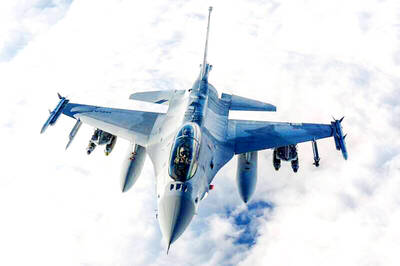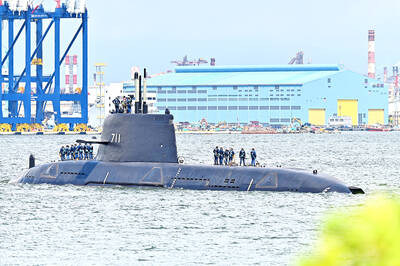IBM Corp, the world's biggest computer company, topped the list of companies receiving US patents for the 12th year in a row.
IBM received 3,248 patents last year, 167 less than in 2003, according to preliminary figures released yesterday by the US Patent and Trademark Office, based in Alexandria, Virginia.
As in past years, the 10 recipients of the most patents are technology-related companies, including five based in Japan, four in the US and one in South Korea.
Companies with the most patents can use the ranking to promote themselves as being at the forefront of technological innovation, said Brad Wright, an attorney who helps firms obtain patents.
Licensing Revenue
More patents also can translate to higher revenue from licensing technology to competitors.
"They have a sort of fear factor with companies like IBM or other companies that have thousands of patents," Wright said. "The target licensees frequently are persuaded by the sheer raw number of patents."
Dutch electronics company Royal Philips Electronics NV dropped off the top-10 list from last year and Japan's Toshiba Corp joined it.
Technology patents can take as long as three years to process, compared with an average of two years for all other categories. IBM, which is selling its personal-computer business, has relied on advances in nanotechnology and computer services to stay on top of the list. The company has one of the world's largest patent portfolios and spent US$5.1 billion in research in 2003, the most recent year for which figures are available.
IBM spokesman Chris Andrews didn't return calls seeking comment.
HP Improves
Hewlett-Packard Co, which rose to fourth place from fifth place in its third year on the list, has made patents a top priority. The company rewards employees for proffering ideas, and it set up a licensing program to increase revenue.
"We're improving our position from a standpoint of income from outlicensing activities," said Steve Fox, vice president and deputy general counsel for intellectual property for Hewlett-Packard. Being on the list is "an objective because what it shows relative to the other technology companies is that we're doing the right thing."
The US government received 829 patents, just more than half the number received by Sony Corp, which ranked No. 10.
Semiconductor companies Intel Corp and Micron Technology Inc made the list because "they protect even small advances in their technology," said David Klein, a patent lawyer who handles licensing issues.
Other companies with the most patents tend to focus on a wider range of products, he said.
Fewer, more valuable patents sometimes deliver higher sales than a large tally. Pfizer Inc, the world's largest drug maker, has only five patents covering the cholesterol drug Lipitor.
The drug's US$10 billion in annual sales dwarfs Micron's US$4.4 billion.

LONG FLIGHT: The jets would be flown by US pilots, with Taiwanese copilots in the two-seat F-16D variant to help familiarize them with the aircraft, the source said The US is expected to fly 10 Lockheed Martin F-16C/D Block 70/72 jets to Taiwan over the coming months to fulfill a long-awaited order of 66 aircraft, a defense official said yesterday. Word that the first batch of the jets would be delivered soon was welcome news to Taiwan, which has become concerned about delays in the delivery of US arms amid rising military tensions with China. Speaking on condition of anonymity, the official said the initial tranche of the nation’s F-16s are rolling off assembly lines in the US and would be flown under their own power to Taiwan by way

OBJECTS AT SEA: Satellites with synthetic-aperture radar could aid in the detection of small Chinese boats attempting to illegally enter Taiwan, the space agency head said Taiwan aims to send the nation’s first low Earth orbit (LEO) satellite into space in 2027, while the first Formosat-8 and Formosat-9 spacecraft are to be launched in October and 2028 respectively, the National Science and Technology Council said yesterday. The council laid out its space development plan in a report reviewed by members of the legislature’s Education and Culture Committee. Six LEO satellites would be produced in the initial phase, with the first one, the B5G-1A, scheduled to be launched in 2027, the council said in the report. Regarding the second satellite, the B5G-1B, the government plans to work with private contractors

‘NARWHAL’: The indigenous submarine completed its harbor acceptance test recently and is now under heavy guard as it undergoes tests in open waters, a source said The Hai Kun (海鯤), the nation’s first indigenous defense submarine, yesterday began sea trials, sailing out of the Port of Kaohsiung, a military source said. Also known as the “Narwhal,” the vessel departed from CSBC Corp, Taiwan’s (台灣國際造船) shipyard at about 8am, where it had been docked. More than 10 technicians and military personnel were on deck, with several others standing atop the sail. After recently completing its harbor acceptance test, the vessel has started a series of sea-based trials, including tests of its propulsion and navigational systems, while partially surfaced, the source said. The Hai Kun underwent tests in the port from

MISSION: The Indo-Pacific region is ‘the priority theater,’ where the task of deterrence extends across the entire region, including Taiwan, the US Pacific Fleet commander said The US Navy’s “mission of deterrence” in the Indo-Pacific theater applies to Taiwan, Pacific Fleet Commander Admiral Stephen Koehler told the South China Sea Conference on Tuesday. The conference, organized by the Center for Strategic and International Studies (CSIS), is an international platform for senior officials and experts from countries with security interests in the region. “The Pacific Fleet’s mission is to deter aggression across the Western Pacific, together with our allies and partners, and to prevail in combat if necessary, Koehler said in the event’s keynote speech. “That mission of deterrence applies regionwide — including the South China Sea and Taiwan,” he